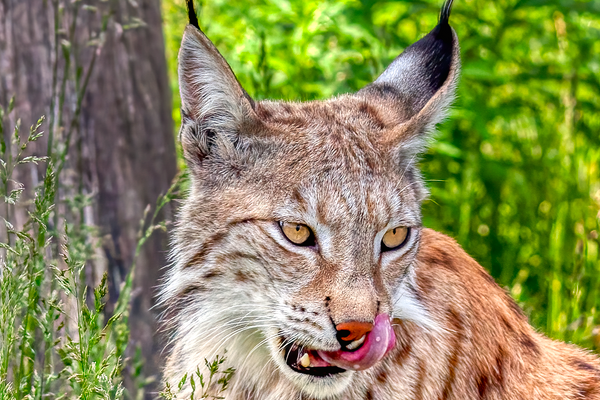Beavers Are Back in Cornwall
After a 500-year absence, two of the toothy mammals are now sniffing around a local pond.
Five hundred years ago, Great Britain was full of beavers. They thrived in the country’s forested, riverine landscape—by chewing down trees and building dams, they even helped to shape it.
Unluckily for them, though, they had warm fur and musky scent glands, two things that humans were willing to kill for. By the 1600s, there were none left in the entire country—no beavers in London, no beavers in , and definitely no beavers in Cornwall, a moorland county that makes up the country’s southwest tip.
That is, until today. After meticulous planning (and a successful crowdfunding campaign), a pair of Eurasian beavers was just reintroduced in Ladock, thanks to a local Wildlife Trust initiative called the Cornwall Beaver Project.
IT’S OFFICIAL! Beavers are now back in Cornwall pic.twitter.com/toyZe5rdrb
— Cornwall Beaver (@CornwallBeaver) June 16, 2017
Egged on silently by an enthused crowd, the two beavers, which were bred in captivity, left their transport containers at 4 PM local time. They immediately began to explore their new habitat, a six-acre glade that belongs to an organic farm. One sniffed at the vegetation, while the other made a confident beeline for the nearby shore, and slid into the pond.
Over the past few years, various UK counties, including Kent, Gloucestershire, and Lancashire, have brought back beavers. While most of these reintroductions were the result of careful planning, at least one was accidental—after a beaver family “of unknown origin” showed up in Devon in 2010, authorities agreed to keep them around, and to monitor their effects on the landscape.
Cornwall is being similarly careful: The beavers’ new home is bordered by a wire and timber fence. “While technically captive, [the beavers] will be living lives as if they were wild,” Peter Cooper wrote yesterday on the project blog. “There will be little interference from people, and they will become part of the local ecology in its own right.”
Hello @sueperkins fancy coming to watch this chap released for @CornwallBeaver Project?! @BBCSpringwatch @WildlifeTrusts pic.twitter.com/n0OxFC2okC
— C’wallWildlifeTrust (@CornwallNature) June 6, 2017
Scientists will be watching to see how the beavers restructure their territory—they expect the enclosed stream to get much larger, and now-sparse species to return. They’ll be tracking how the beavers affect the fish population—a big local concern—and whether their engineering reduces the impact of local floods.
That’s a lot of pressure for a couple of beavers (and eventually, the organizers hope, a litter of kits). For today, though, observers were content to just watch them paddle around, bringing a splash of the past back to Cornwall.

















Follow us on Twitter to get the latest on the world's hidden wonders.
Like us on Facebook to get the latest on the world's hidden wonders.
Follow us on Twitter Like us on Facebook